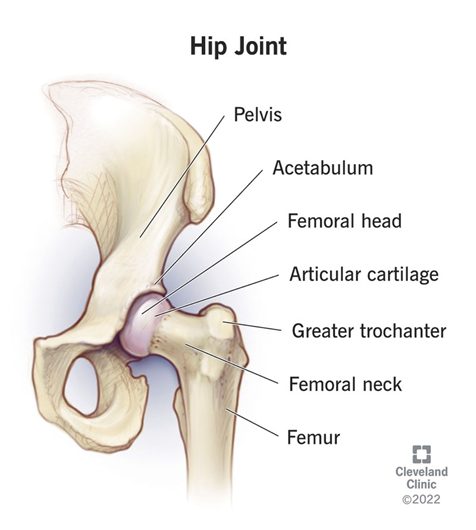Hip Anatomy
By Johnny Martin, Graduate Assistant
The hip joint is one of the most important and largest joints within the body. It is the connection between your femur and your pelvis. This connection between the two bone segments creates what is called a ball-and-socket joint. The femur, being the longest bone in the body, has a rounded top. This rounded top fits into the socket of the acetabulum and provides support for your legs to hold your body upright. The size of the femur head is about 48 – 55mm, which is the size of an apple.
With the joint being a ball-and-socket joint, it provides the body the ability to perform wide ranges of motion, movements, and functions. Functions include providing balance and support for the upper body, moving your upper leg, and holding your weight. The movements that this type of joint provides are flexion, extension, rotation, back-and-forth motion, and circular motions.
Just like most joints in the body, the hip joint includes several components which include bones, cartilage, ligaments, tendons, synovium, bursa, and muscle. Synovium is a thin covering that wraps around bones in the joint and it makes a fluid that provides lubrication for smooth movement. A bursa is a fluid-filled sac that provides cushion for muscles and joints to move smoothly.
The main muscles within the hip joint include the gluteus maximus, tensor fascia latae, and the iliotibial band. The main tendon in the hip is the iliopsoas tendon, and the main ligaments include the inguinal ligament, iliofemoral, pubofemoral, and ischiofemoral ligaments. The hip joint is a key part of human anatomy and can cause serious problems when injured and/or diseases affect the movement and function of the hip joint.
Image: Hip Joint: Anatomy & How It Works (clevelandclinic.org)
